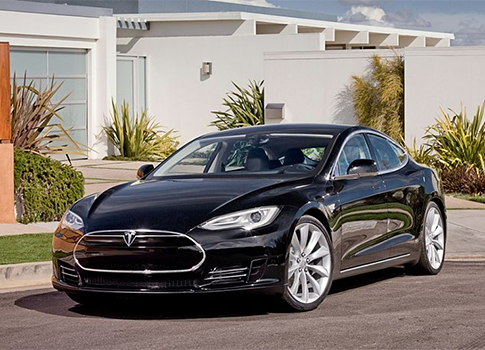New York Times writer John M. Broder discovered that "theory can be trumped by reality, especially when Northeast temperatures plunge," while driving a $101,000 Tesla Model S Sedan recently:
Setting out on a sunny 30-degree day two weeks ago, my trip started well enough. A Tesla agent brought the car to me in suburban Washington with a full charge, and driving at normal highway speeds I reached the Delaware charging dock with the battery still having roughly half its energy remaining. I went off for lunch at the service plaza, checking occasionally on the car’s progress. After 49 minutes, the display read "charge complete," and the estimated available driving distance was 242 miles.
Fat city; no attendant and no cost.
As I crossed into New Jersey some 15 miles later, I noticed that the estimated range was falling faster than miles were accumulating. At 68 miles since recharging, the range had dropped by 85 miles, and a little mental math told me that reaching Milford would be a stretch.
I began following Tesla’s range-maximization guidelines, which meant dispensing with such battery-draining amenities as warming the cabin and keeping up with traffic. I turned the climate control to low — the temperature was still in the 30s — and planted myself in the far right lane with the cruise control set at 54 miles per hour (the speed limit is 65). Buicks and 18-wheelers flew past, their drivers staring at the nail-polish-red wondercar with California dealer plates.
Nearing New York, I made the first of several calls to Tesla officials about my creeping range anxiety. The woman who had delivered the car told me to turn off the cruise control; company executives later told me that advice was wrong. All the while, my feet were freezing and my knuckles were turning white.
The U.S. Department of Energy loaned Tesla $465 million. Frozen extremities are free of charge.
